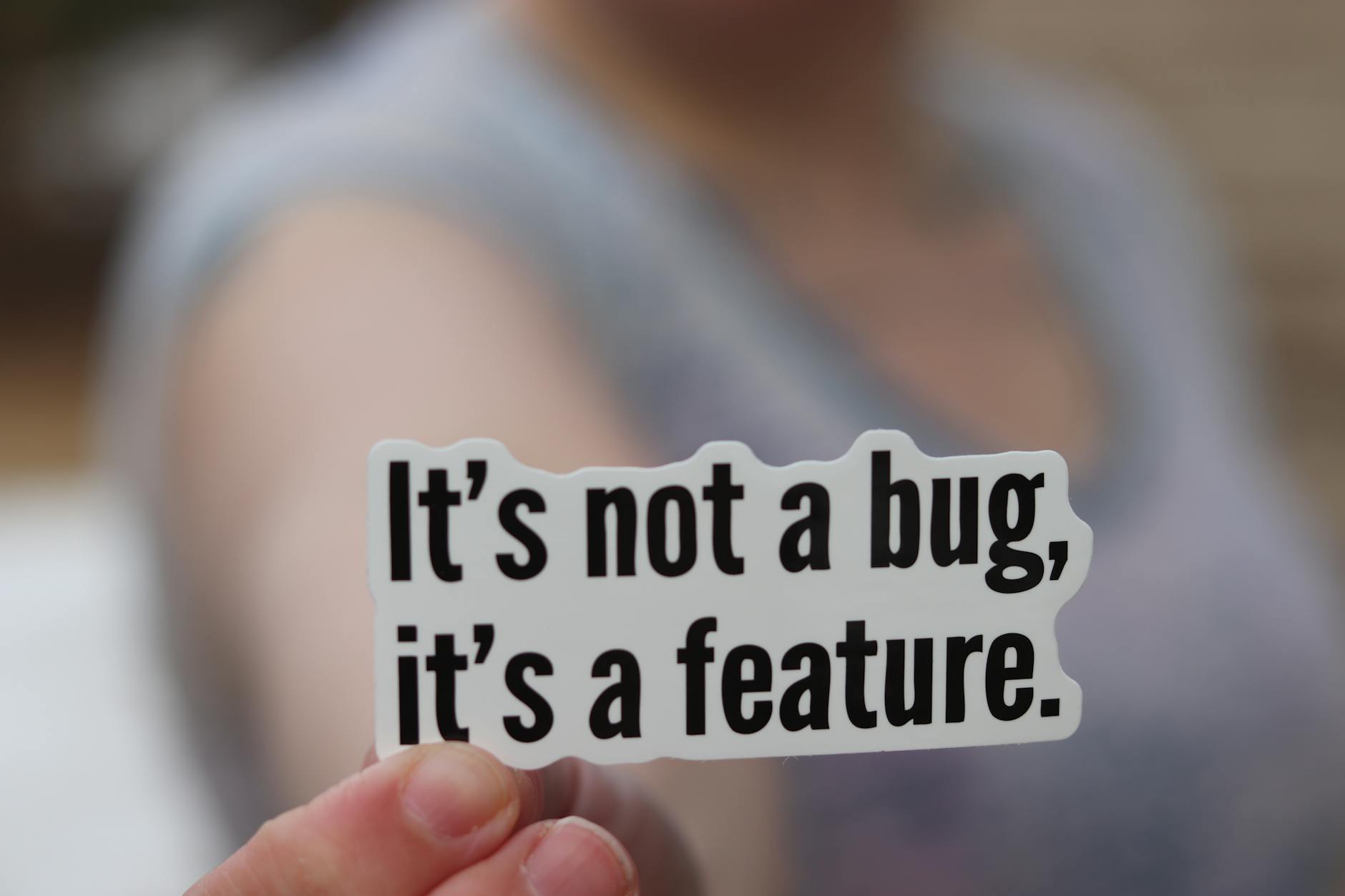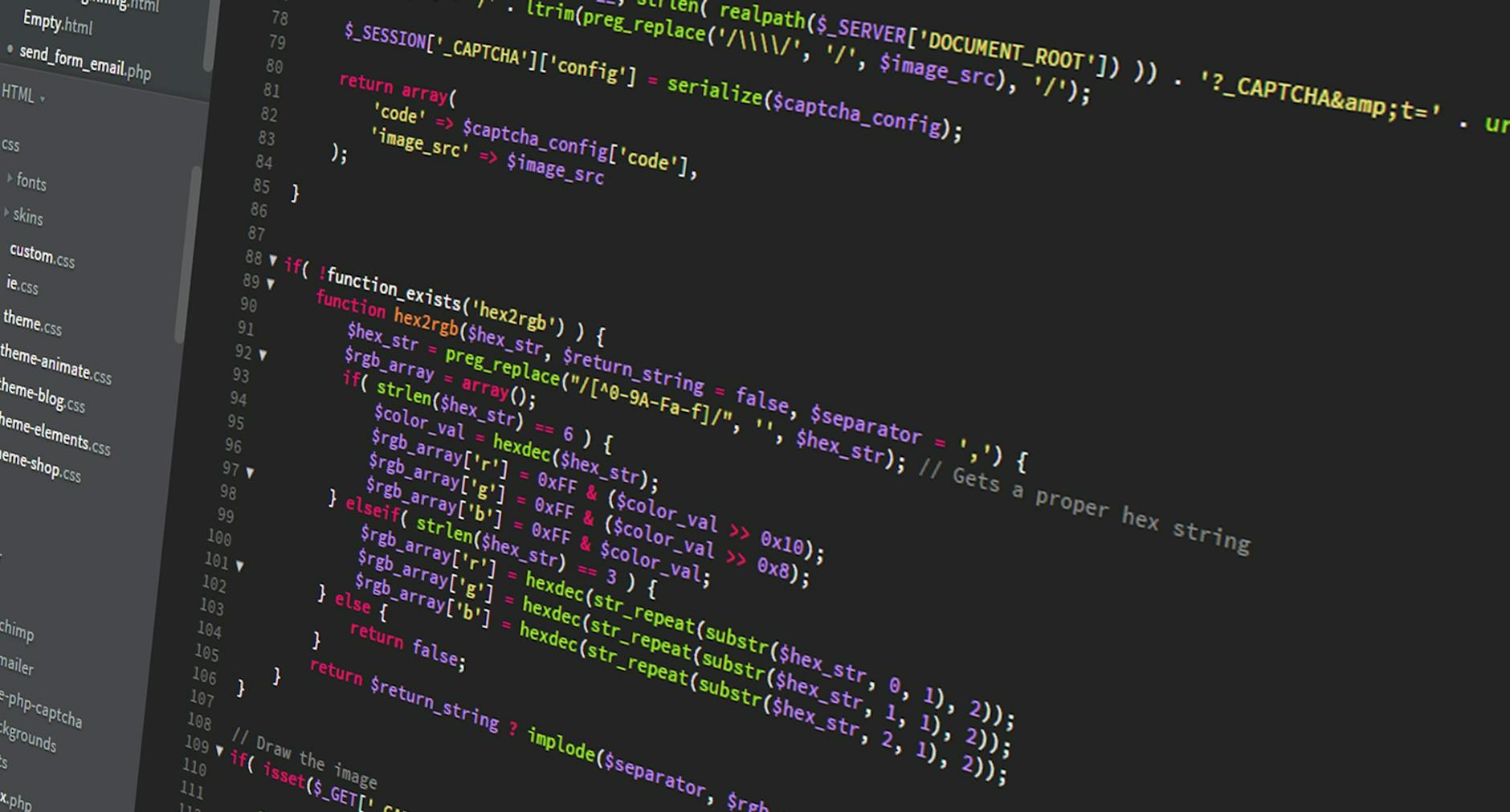Mastering Data Types in C: Guide for Programmers
The Basics of Data Types
Introduction to Data Types
In C programming, data types are like the good old boxes defining what we can stuff into them. Essential ingredients in coding, each type sets the stage for how much space a variable takes up and what can be stored in it. Think of int, char, float, and double as your main players, each with a special role in holding numbers, characters, and all those goodies.
We roll out data types in C under these categories:
- Primary Data Types: The basics like
int,char,float, anddouble. - Derived Data Types: More complex structures like arrays, pointers, structures, and unions.
- User-defined Data Types: Custom creations with
typedefor enumerations.
Additionally, we’ve got these fancy modifiers—signed, unsigned, short, and long—to fine-tune memory and how much space these data types take up and how much they can hold (Wikipedia).
Importance of Data Types
So why are these data types really the big cheese in C programming?
-
Memory Allocation: Knowing the size helps when we store stuff. Say, an
inttypically grabs 4 bytes whereas acharonly needs 1. Makes a difference, right? (Lenovo). -
Data Integrity: They keep things in check, ensuring that the data jammed into a variable fits like it should. No more awkward surprises with type-related blunders.
-
Optimization and Performance: By picking the right type, memory and performance get a nice boost. A lone
charfor a character? Saves space compared to an overkillint. -
Error Prevention: Strong typing’s like the grammar police—snagging mistakes before they bubble up when you least expect it, in the middle of your code-creation marathon. (GeeksforGeeks).
-
Interoperability: When it’s about teaming up different languages or tapping into APIs, data types keep things smooth and consistent.
Curious about the nitty-gritty of C programming? Swing by our c programming language basics page.
| Data Type | Size (Bytes) | Range |
|---|---|---|
char |
1 | -128 to 127 or 0 to 255 |
int |
4 | -2,147,483,648 to 2,147,483,647 |
float |
4 | 1.2E-38 to 3.4E+38 |
double |
8 | 2.3E-308 to 1.7E+308 |
Grasping these basic data types is key, especially when dabbling with C’s low-level wizardry where memory management’s a big deal. If you’re curious about programming languages beyond C, check out our guides on python language for beginners and introduction to c# language.
Integer Data Type
Understanding Integers
In C, the integer data type is what we’d call the backbone of number-crunching. It’s the go-to when you need to store whole numbers – be it counting your chickens before they hatch or tracking debts that rival your yearly coffee budget. Integers handle your run-of-the-mill digits, whether they’re positive, negative, or zero, with ease. They also show off a bit by representing numbers in decimal, octal (starts with 0), and hexadecimal (starts with 0x) formats. Look at us referencing GeeksforGeeks.
| Feature | Value Range (Signed) | Value Range (Unsigned) |
|---|---|---|
| Size (Standard) | -2,147,483,648 to +2,147,483,647 | 0 to 4,294,967,295 |
| Size (Bytes) | 4 bytes (32 bits) | 4 bytes (32 bits) |
Source: BinaryUpdates
Working with Integer Variables
When we dive into integer variables in C, the int keyword is our magic wand. Here’s the classic spell for declaring and initializing an integer:
int myNumber = 10;
Knowing the ropes with signed and unsigned integers is a real game-changer. Signed ones juggle both positives and negatives; unsigned ones stack positives and zeroes like they’re winning the lottery, boasting twice the max value.
signed int positiveNumber = 100;
unsigned int largeNumber = 4000000000U;
To squeeze the most out of memory and precision, C throws a buffet of integer types at us. Each has a unique flair:
| Type | Size (Bytes) | Value Range (Signed) | Value Range (Unsigned) |
|---|---|---|---|
short int |
2 | -32,768 to 32,767 | 0 to 65,535 |
int |
4 | -2,147,483,648 to 2,147,483,647 | 0 to 4,294,967,295 |
long int |
4 | -2,147,483,648 to 2,147,483,647 | 0 to 4,294,967,295 |
long long int |
8 | -9,223,372,036,854,775,808 to 9,223,372,036,854,775,807 | 0 to 18,446,744,073,709,551,615 |
Source: Wikipedia
With the ever-present tug-of-war between memory space and performance, selecting the right integer can mean the difference between smooth sailing or sinking. Pick wisely based on your system’s needs and your program won’t just survive, it’ll thrive.
Taking a peek at languages like Python and C#, you’ll find similar ground but seasoned in their own spicy ways. Each has its rules of the game, which offer us a rounded skill set — perfect for choosing which tool fits our coding escapades and challenges best.
Character Data Type
Grasping the character data type is super important when tinkering with the C programming language. Let’s unravel what makes these characters tick and how to juggle them with ease.
Exploring Characters
In C, characters are treated as kings and queens with the char data type. A char is your go-to for storing just one character and takes up a bite-sized chunk of memory—1 byte, to be precise (GeeksforGeeks). Each character naturally comes with its own numeric identity, courtesy of ASCII. For capital letters, their kingdom stretches from 65 to 90, while lowercase takes over from 97 to 122 (Simplilearn).
If you’ve ever wondered how to park a letter inside a char, it’s easy-peasy:
char letter = 'A';
For those who didn’t pay attention in ASCII school, here’s a crib sheet:
| Character | ASCII Value |
|---|---|
| A | 65 |
| B | 66 |
| a | 97 |
| b | 98 |
Handling Character Data
Jumping into the character pool means you’ll be dealing with reading, writing, and giving characters a bit of a makeover. Check out some handy tricks for messing around with character data in C:
Initializing and Declaring
Declare yourself in the world of characters like this:
char initial = 'H';
char symbol = '#';
Input and Output
To get a character from someone hammering away at the keyboard, crank up scanf:
char inputChar;
scanf("%c", &inputChar);
To show off that character, flash it with printf:
printf("The character is %c\n", inputChar);
Character Arrays (Strings)
A solo char is a lonely thing, but when they band together in an array, they make all the words in the universe:
char str[] = "Hello, World!";
Don’t forget, every character squad needs to end with a \0 to be officially recognized as a string.
Manipulating Characters
Time for some character gymnastics—flipping cases or figuring out if a character likes to hang with numbers or letters. Enter <ctype.h> for the win:
#include <ctype.h>
char lower = tolower('A'); // Flips that 'A' to 'a'
char upper = toupper('a'); // Pops that 'a' back to 'A'
if(isdigit('5')) {
printf("It's a digit.\n");
}
if(isalpha('A')) {
printf("It's a letter.\n");
}
Once you get the hang of character data types, your programs will run smoother than a greased-up penguin. If your curiosity needs feeding, dive deeper into our piece on C programming language basics. Compare it with the Python perspective in Python programming language overview for a good blend of code cultures.
Float Data Type
In C programming, the float data type is your trusty pal when dealing with decimal and exponential values using single precision. Wrapping your head around floats is a must for anyone messing with numbers on a regular basis.
Float Basics
Think of a float in C as a data storage superhero for numbers with fractions. It’s stored using 4 bytes of memory, juggling values from about 1.2E-38 to 3.4E+38 (Simplilearn). This massive range makes floats pretty convenient for things like science experiments or playing around with graphics where accuracy is the name of the game.
Key Characteristics of Floats:
- Memory Space: 4 bytes
- Range: 1.2E-38 to 3.4E+38
- Uses: Ideal for decimal numbers and average-range scientific math
| Characteristic | Value |
|---|---|
| Memory | 4 bytes |
| Range | 1.2E-38 to 3.4E+38 |
Decimal and Exponential Values
Floats are the Swiss Army knife of data types, handling both decimal and exponential numbers like a champ. Let’s break this down:
Decimal Values
Decimals got fractions, just like my grandma’s old recipes—3.14 or 0.001, for instance. Floats fit these numbers like a glove, offering just the right mix of precision and range. Check out this simple tidbit:
float decimalValue = 3.14;
printf("Decimal Value: %f\n", decimalValue);
Exponential Values
Exponentials are for those massive or tiny numbers, dressed fancy in scientific notation. For instance, 3.4E+38 means 3.4 times 10 raised to the 38th power. With floats, dealing with such magnitudes is a breeze:
float expValue = 3.4E+38;
printf("Exponential Value: %e\n", expValue);
The beauty of floats is their flexibility with wide-ranging magnitudes, coming in handy in fields like physics, engineering, and computer graphics.
Curious for more on C programming basics? Check out our C programming language basics. Or, if you’re up for a dive into another coding world, our piece on the Python programming language might tickle your fancy.
Mastering the float data type amps up your C programming skills, making you a whiz at all kinds of number crunching.
Double Data Type
Let’s chat about doubles in C programming. They’re like the go-to for when you need to jazz up your decimal numbers with more range and accuracy.
Double Precision
So, doubles in C are basically your reservoir for decimal numbers, holding onto them with what’s called ‘double precision’. Basically, doubles have got space for up to 64 bits. If you’re counting, that’s about 16 to 17 digits hanging out before or after the decimal point (GeeksforGeeks). This means you get way more accuracy in your calculations. You know, when you’re pretending to be a rocket scientist or something.
Let’s take a quick look at how they stack up next to floats:
| Data Type | Bytes | Bits | Precision (Digits) |
|---|---|---|---|
| float | 4 | 32 | ~7 |
| double | 8 | 64 | ~16-17 |
Cheers, Simplilearn for these numbers.
What’s cool about doubles is they’re twice the memory of floats. That’s 8 bytes compared to 4—that’s a whole lot of decimals, making you the boss in any high-precision gig. Dive deeper into what makes C tick with our c programming language basics.
Comparing Double and Float
Both float and double types deal with numbers that like floating points, but they’re not quite twins. It’s all about the precision and the space they need to strut their stuff. Floats will hold around 7 digits, while doubles stretch up to 17. When you’re crunching complex numbers, those extra digits in doubles are your friends.
| Comparison | float | double |
|---|---|---|
| Storage (Bytes) | 4 | 8 |
| Precision (Digits) | ~7 | ~16-17 |
| Range of Values | 1.2E-38 to 3.4E+38 | 2.3E-308 to 1.7E+308 |
Data thanks to Simplilearn and GeeksforGeeks
But here’s the kicker: more precision means taking up more room. Doubles hog more memory (8 bytes) versus floats (4 bytes). So, if you’re working with tight memory quarters, you might need to balance out precision and space.
Picking float or double boils down to what you need—do you crave precision, or do you gotta save that memory? Peek at introduction to c# language for more on juggling memory and data types.
When you really dig into what doubles and floats bring to the table, you can make solid calls on data types, boosting your program’s performance and nail those accurate calculations. Always sharpen your skills on type tweaks and stop them errors before they start (check out our type optimization) when space or resources are tight.
Void Data Type
Purpose of Void Type
When diving into C programming, one of the basics you’ll bump into is the void data type. Think of void as the “none” option in C’s world of data types. It means we’re dealing with something that doesn’t give back any data or doesn’t need an input to do its job (GeeksforGeeks). It’s like your silent partner in several settings:
- Function Return Type: When a job’s about doing work without handing back a result, we slap a void on it.
- Function Arguments: Sometimes, a function won’t take any inputs, and void makes that clear.
- Pointer to Void: The void pointer (
void *) is all about pointing anywhere and everywhere, useful for managing memory without fussing over what type it is.
Skipping the needs for values is pretty handy when you’re just interested in getting things done!
Applications of Void Data Type
Void isn’t just a concept; it’s the MVP in many C programming scenarios. Here’s how it sticks its neck out:
| Application | Description |
|---|---|
| Function Return Type | Best for when functions don’t hand anything back, like void printMessage(). |
| Function Arguments | Makes clear that a function won’t take any input, like in void func(void). |
| Void Pointers | Jack-of-all-trades pointers, perfect for memory gigs like malloc and free. |
- Function Return Type:
When all you’re after is getting work done without needing to hear about it afterward, void is your go-to. Check this out:
void displayMessage() {
printf("Hello, World!\n");
}
- Function Arguments:
When no inputs are involved, void steps in to say, “Nothing needed here, thank you very much”:
void noArgumentsFunction(void) {
// Function hustle
}
It keeps things crystal clear.
- Void Pointers:
Imagine void pointers as the Swiss Army knife of pointers, ready to tackle any type of data. Handy for tasks like:
void *ptr;
int a = 10;
ptr = &a;
For more gritty details on programming and data types, cruise through our c programming language basics or even peek at an introduction to C# language. For those of you interested in simmering down into other coding languages, give our python programming language overview a whirl.
Getting your head around the void data type in C? It’s a key step toward writing slick, hassle-free code.
Programming Data Type Considerations
When tinkering with C, getting comfy with data types is your first order of business. Not only will this keep your code in line, but it’ll save you from those memory headaches down the road. Let’s gab about the nitty-gritty of memory allocation and what those data types mean for all that precious memory.
Memory Allocation
In C, the memory your variables hog is all about their type and size. Every data type—from int to char to float and double—takes up its own slice of memory pie (Simplilearn). Here’s a cheat sheet on how much each one chows down:
| Data Type | How Much Memory? |
|---|---|
char |
1 byte |
int |
4 bytes |
float |
4 bytes |
double |
8 bytes |
When you toss out a variable like int or double, the C compiler’s got your back, divvying up memory just right. An int gobbles 4 bytes, a double takes 8. Toss in some modifiers like signed, unsigned, short, and long, and you can guess the memory buffet gets shuffled around—long long will need to bring home a whopping 64 bits.
Line up your memory sticks right to keep your pointers dancing smoothly and sidestep any of those mystery bugs that give you grief (Stack Overflow). Picking just the right data type while knowing its memory munching habits can boost your program’s speed and trustworthiness like a shot of espresso.
Impact on Memory Usage
Data types are the bouncers deciding how much room your program gets on the memory dance floor. A lil’ char yields fewer bytes than a portly float or double (Lenovo). Peep at how they stack up:
char: Great for letters or teeny numbers ’cause it barely takes a byte.int: Your go-to for number crunching, sitting easy at 4 bytes.float: Handles pointy math but needs a bit more space, clocking in at 4 bytes.double: The heavyweight champ of accuracy in math-o-rama, using up to 8 bytes.
Picking the right gang for your data types isn’t just about squeezing memory—it’s how you’ll boost your program’s efficiency and dodge those pesky errors. With C’s rules, once you say a variable’s a certain type, it’s sticking with it (BinaryUpdates). So, mastering and making the most of these data types is your ticket to stellar programming and top-notch memory handling.
If you’re up for more C wisdom, swing by our c programming language basics page. Curious about Python or C#? Check out our rundowns on python programming language overview and introduction to c# language.
Type Inference and Type Checking
Getting a grip on type inference and checking is key for cracking data types in C programming. These ideas are big-time players in making our code solid and snappy.
Dynamic vs. Static Typing
Typing? It’s like choose-your-own-adventure: dynamic or static.
Dynamic Typing
- Here, the type of a variable gets figured out during the hustle and bustle of execution.
- It’s like a flexible sidekick, letting variables change their stripes whenever they want.
- But, with great power comes runtime surprises if suddenly someone throws a curveball with variable types.
| Language | Typing | Example |
|---|---|---|
| Python | Dynamic | x = 10 then x = "hello" |
Static Typing
- Static means declaring the type up front—it’s like saying, “Hey, I’m keeping this system in check.”
- Detects errors early in the game, making everything more solid.
- Yeah, it’s less chameleon-like than dynamic typing, but the structure is crystal clear and safe.
| Language | Typing | Example |
|---|---|---|
| C | Static | int x = 10; |
Curious about static typing’s finest details? Check out our piece on C programming basics.
Strongly Typed Languages
Strongly typed languages, like our buddy C, are strict about sticking to the rules. Once a type gets stamped on a variable, that’s it. No funny business. This steadfastness keeps our data safe and weeds out many usual goof-ups.
Traits of Strongly Typed Languages:
- Type Safety: Stick with your kind, less chance of slips.
- Compile-Time Checks: Catch those goofs early instead of at run-time.
- Boosted Performance: Knowing the type early means we’re ready for speed hacks.
| Language | Typing Strength | Example |
|---|---|---|
| C | Strong | int x = 10; // x’s gotta keep it integer real |
Wanna learn about different languages and their vibes? Dive into our Python for the first timers and C# rookie intro.
Grasping these ideas bulks up our coding toolbox. Whether we’re banking on static for its dependability or using dynamic for its free spirit, picking the right typing approach boosts our code game and knocks out errors.
Making Code Faster with Data Types
Cranking up the speed of our C programming means picking the right data types to make our code run smoother and keep those pesky errors at bay. Here, we’ll share how to boost performance and stomp out errors using data types wisely.
Smart Choices with Types
Using the right data type in C isn’t just smart; it’s how we get our code to run like a well-oiled machine. The type we choose can make a big difference in how much memory our code eats up, how zippy it runs, and just how well it gets the job done.
-
Saving Memory:
Every data type has its own memory baggage. For example, aninttype usually chews up less memory than afloat. Picking smaller data types when they do the job can help keep memory usage in check and make the program faster.Data Type Memory Use char1 byte short2 bytes int4 bytes float4 bytes double8 bytes long double10-16 bytes Knowing this can help us select efficient types for our variables.
-
Pointer Smarts:
Getting pointers lined up right in memory is like giving our program a map. Mess it up, and we might end up with more trouble than we bargained for. Misaligned pointers can slow things down or lead to weird glitches. -
Speedy Tricks:
Sometimes a union can cram different data types into one spot in memory, which might help speed things up. But, be careful, this can make fixing stuff a headache and open the door to mistakes.
Stopping Errors with Data Types
Picking the right data types in C doesn’t just tidy things up; it keeps errors from sneaking in and helps us write code that doesn’t fall apart. C is all about sticking to its rules, so once we declare a variable’s type, it better stay that way (BinaryUpdates).
-
Spotting Mistakes:
Strong typing means our code gets checked for type boo-boos before it runs, catching potential slip-ups early. This makes our code sturdy and keeps runtime mishaps at bay (Lenovo). -
Clear Codes:
Declaring each variable’s type makes our code easy to read and understand. It tells fellow programmers exactly what’s going on, making it easier for others who might have to tamper with it later on. -
Error Handling Done Right:
Good data types lead to better error management. For example, usingunsignedvariables for non-negative numbers ensures we know what’s going on and strengthens data soundness.
By focusing on type smarts and sticking to strict data rules, we can turn our code into a powerhouse of performance and dependability. For more insights into the nuts and bolts of C, check out our article on c programming language basics or dive into other cool topics like python programming language overview and introduction to c# language.













